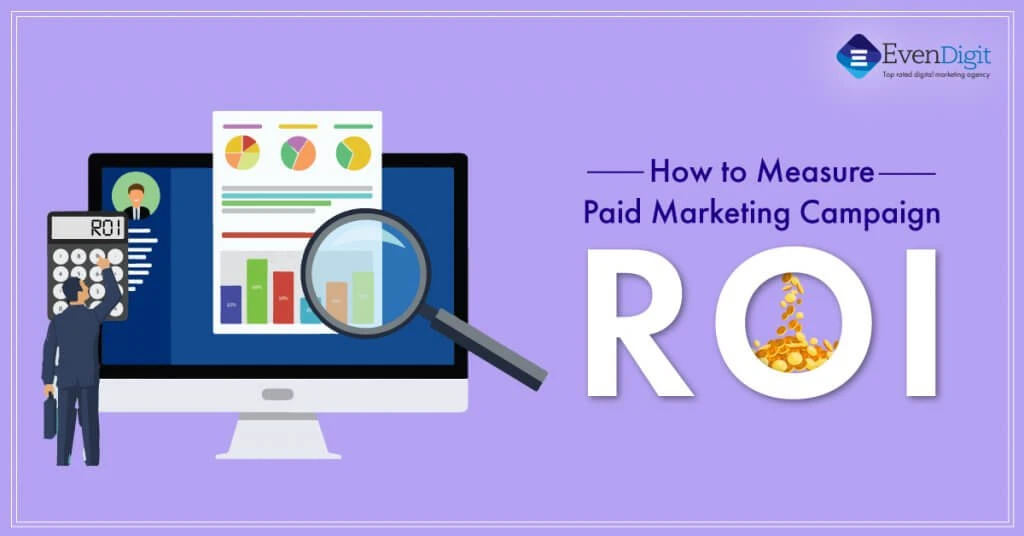
When you invest in Google ads, you expect that it would bring the best ROI. But, does it deliver the expected ROI? How would you determine the performance of your ad campaign?
Tracking ROI seems to be the best way to evaluate the performance. It allows you to assess the effectiveness of a paid marketing campaign which helps you to determine whether you should continue investing in ads or not.
Ask your agency about how much ROI a paid campaign is giving. You can ask them about the number of articles they are posting, the number of clicks on a post, conversions, the way they are targeting the audience, and so on. If your agency is not able to give you a satisfactory answer, then chances are your digital marketing agency might be fooling you. So, what should you do about it?
If your marketing dashboard is updated every month, it provides tons of data in terms of cost and results for you to revise your marketing strategy. It revolves around some important vital metrics that need your attention.
Let’s quickly jump into the critical parameters required to assess the ROI of your paid marketing campaign.
Key Metrics to Track Your Performance
Let’s explore some valuable metrics to measure the performance of your paid marketing campaign.
1. Clicks
Clicks refer to the number of people who have clicked on your ad after seeing it on their screens. Clicks are one of the traffic data metrics that allow you to assess the intensity of your ads. Since it is traffic driven, it will help you to understand the health and performance of your paid marketing campaign. If an advertisement is not working as desired, you can choose to stop that ad. Moreover, you can increase the bid for the ads that bring better traffic.
2. CTR
CTR or Click Through Rate is another essential key metric that helps you ascertain your marketing campaign ROI. It is also a traffic driven metric that assesses the average number of clicks a paid campaign gets in a month. You get CTR by dividing the total number of clicks in a month by its overall impressions.
For instance, if you have got 10,000 impressions, and the number of times your ad was clicked is 200 then, your CTR would be 50%.
It is also a great performance indicator. You should focus on improving your CTR; otherwise, it may affect other variables including quality score.
3. CPC
CPC or Cost Per Click refers to the amount an advertiser pays for every click. It is also a performance or traffic driven metric that helps you understand how well your ad is performing. The purpose of analyzing this metric is to determine the cost of ads shown to users on search engines, Google Display Networks in Adwords.
It is calculated by dividing your advertisement cost by the number of clicks. If your advertisement cost is $100 and the number of clicks on that ad is 50 then, your cost per click would be $2 for every click.
CPC plays a crucial role in shaping the bidding strategy and choosing conversion bidding type so that the number of clicks could be maximized within the given budget.
4. Quality Score
Quality score refers to the rating that Google gives in terms of the quality and relevance of your ads. When there is massive traffic towards your ads, and people see it in large numbers, it’s a strong indication in itself that users are finding your ads useful.
If you have a good quality score, then, Google rewards you with higher ad rankings and lower cost per conversion. Cost per conversion is the amount you pay for every action that a user takes whether it’s signing up for free or buying a product from your website. And, it is generally higher than the cost per click.
If your ads are not working then, there could be a lack of synchronization between the keywords, ad text, and landing page. You can optimize your landing page, use highly relevant keywords in your ad campaign, exclude irrelevant search terms from your ads, and refine your ad copy further to improve your quality score.
5. Impression Share
Impression share refers to the number of impressions received on your ads divided by the estimated number of impressions. Estimations are derived based on your current ads target setting, bids, ad groups, product groups, and quality score. There are different types of impression ads in Google Ads that include the following:
- Search impression share
- Display impression share
- Search lost impression share
- Display lost impression share
- Search exact match impression share
When it comes to impression share, if your ads are not showing up on Google then, it could be an issue of keyword selection which indicates how your keyword is performing. It could be due to insufficient budget and poor bids.
You are advised to increase your budget or bids to make your keyword perform so that your ads show up in SERPs and your impression share will improve.
6. Conversion Rate
Conversion rate refers to the number of conversions divided by the number of total ad interactions. It has a lot to do with conversion tracking where you get valuable insights on how well your ads are performing in terms of actual conversions.
If your ad campaign had 1000 clicks and 100 conversions then, your conversion rate would be 0.1%. However, an average conversion rate of 3.75% is considered as good.
Conversion rate indicates the success of your campaign, and this is precisely what campaign managers are hired for. You can keep close tabs on your conversions for which you need to optimize the clicks. So, better aim for cost per acquisition goals first to be eligible to optimize your conversions for which your account is required to have at least 15 conversions in the last 30 days.
2 Ways to Calculate Actual ROI
When it comes to calculating actual ROI for your paid campaign then, it can be calculated in two ways. Let’s have a look:
Profit Per Impression/Clicks
Profit per impression/Clicks refers to the revenue generated on each impression. It is calculated by dividing the profit by the number of impressions. It is a revenue-driven metric that assesses the performance based on the revenue generated per impression.
It is one of the best metrics to evaluate the actual ROI because the revenue is not based on a one-time sale. Instead, it is the lifetime value of your customer. The number of times a customer buys products gives you a clear picture of your profit per impression. You consider the total revenue you get from a customer and not just one-time sales.
ROAS
ROAS or Return On Ad Spend is another marketing metric that measures the revenue earned per dollar that you spend on advertising. It is a revenue-driven metric where your investment in the ads running is the primary factor in determining the returns. It measures as to how effective your ad campaign is? If your ad has a better CPA, but it doesn’t generate revenue, then, it is not a successful ad in terms of revenue generation.
Also, it helps to assess whether the message you are trying to convey through your ads connects well with the audience or not. The more revenue you earn from each dollar spent on your ad indicates that your ads are successful. The higher your ROAS, the better is your ad campaign.
It is calculated by dividing the total conversion value by your advertisement cost. Let’s compare two ad groups:
| Ad Group 1 | Ad Group 2 |
|---|---|
| Ad Spent – $100 | Ad Spent – $100 |
| Conversion – 10 | Conversion – 10 |
| CPA – $100 | CPA – $100 |
| Revenue – $50 | Revenue – $300 |
| ROAS – 0.5 | ROAS – 3 |
You can see that Ad group 2 is better in generating revenue though they have similar CPAs. So, ROAS is a profit-focused strategy that emphasizes on generating more revenue from an ad campaign.
Final Word
When it comes to measuring the effectiveness of a paid marketing campaign, there is not only one KPI that is responsible for the success of your ad, but there are many KPIs that play a crucial role. Everything is independent in ad campaigns, and you are required to give proper attention to every performance metric.
We hope that we have cleared your doubts in this aspect, if you need more information on your ad campaign then, do contact us.
EvenDigit
EvenDigit is an award-winning Digital Marketing agency, a brand owned by Softude (formerly Systematix Infotech) – A CMMI Level 5 Company. Softude creates leading-edge digital transformation solutions to help domain-leading businesses and innovative startups deliver to excel.
We are a team of 70+ enthusiastic millennials who are experienced, result-driven, and hard-wired digital marketers, and that collectively makes us EvenDigit. Read More





